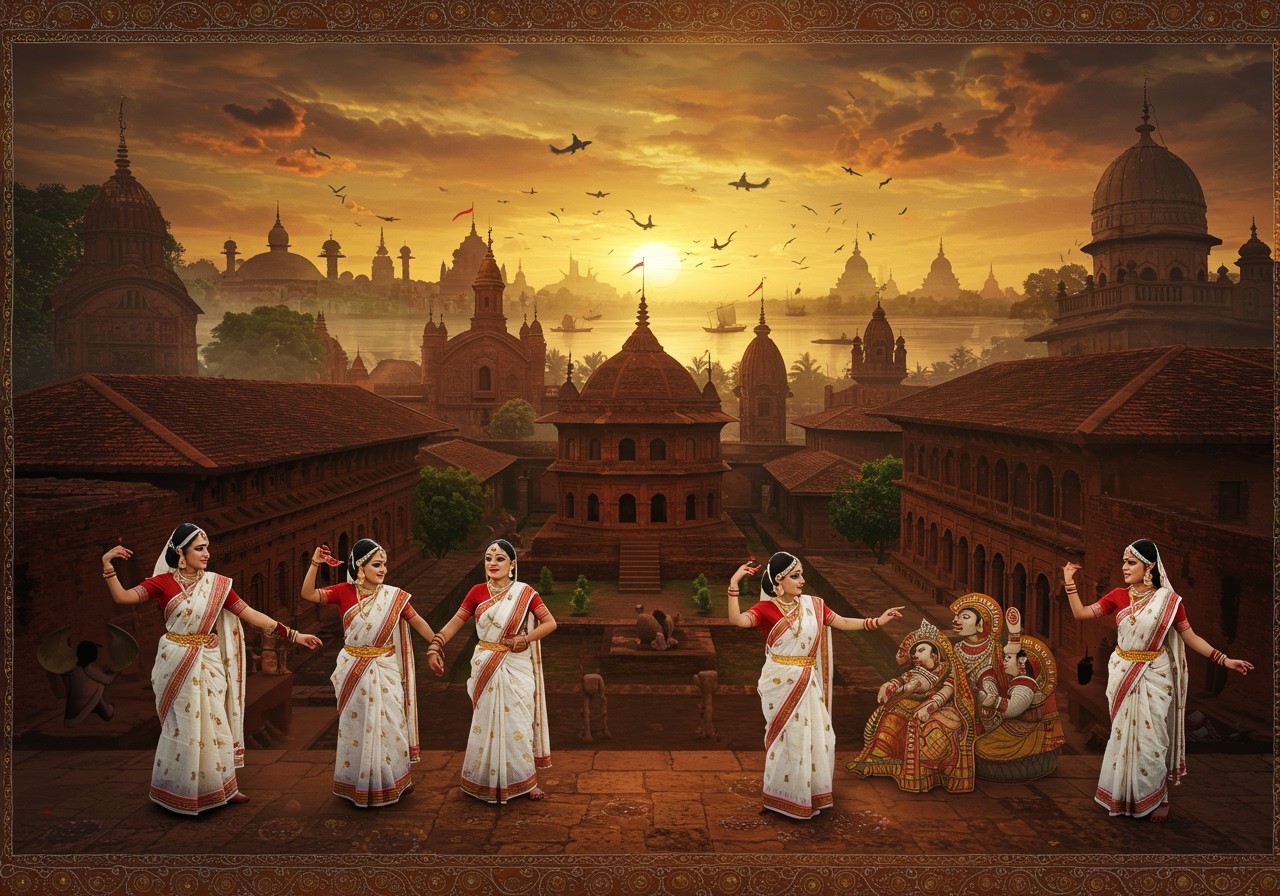
Samatata, an ancient region nestled in the heart of Bengal, holds a special place in India’s vibrant history. This region, steeped in tradition, has profoundly influenced the culture and society of Bengal through the ages. Today, Samatata’s legacy continues to be cherished and celebrated by those who deeply value their cultural roots. Understanding its historical significance adds another layer of appreciation for this fascinating region.
Let’s embark on a journey to uncover the captivating story of Samatata, exploring its historical and cultural contributions to the rich tapestry of Bengal.
A Glimpse into Samatata’s Past
Samatata’s story begins in the early centuries of the Common Era. Situated in present-day Bangladesh, it served as a crucial strategic and cultural hub in ancient Bengal. The region’s political landscape was a dynamic interplay of power, shaping its destiny and leaving an indelible mark on its history. Archaeological discoveries in the area provide invaluable insights into the lives, governance, and societal structures of Samatata’s people.
- Geographical Significance: Samatata’s location in present-day Bangladesh placed it at the crossroads of important trade routes and cultural exchanges, contributing to its vibrant and diverse character. This strategic positioning made it a significant player in the region’s political and economic landscape.
- Power Dynamics: Samatata’s history is intertwined with the ebb and flow of power in the region. It witnessed the rise and fall of empires, played a key role in regional politics, and its interactions with neighboring kingdoms shaped its own development. Understanding these power dynamics is crucial to understanding Samatata itself.
- Archaeological Discoveries: Excavations in Samatata have unearthed a treasure trove of artifacts, including pottery, coins, sculptures, and architectural remnants. These findings offer glimpses into the daily lives, religious practices, artistic expressions, and governance of the people who once called this region home, enriching our understanding of their rich and complex society.
Samatata’s history continues to fascinate and inspire, drawing us into the captivating narrative of Bengal’s past. Explore similar ancient stories and hidden places in our blog post about Kerala temples. For those seeking to connect with ancient traditions, Poojn.in offers a Bengali version of the Srimad Bhagavad Gita, a timeless text that speaks to the heart of Indian spirituality.
The Cultural Tapestry of Samatata
Samatata’s cultural contributions to Bengal are truly remarkable. It was a vibrant melting pot where art, architecture, religion, and traditions intertwined, creating a unique and enduring legacy. The harmonious blend of indigenous practices and foreign influences shaped its cultural landscape, enriching Bengal’s heritage in profound ways.
Art and Architecture: Expressions of Devotion and Skill
Art flourished in Samatata with exceptional vibrancy. Terracotta sculptures, intricate carvings, and elaborate designs found in archaeological sites showcase the remarkable artistic expressions that thrived in this ancient land. These artifacts reflect a harmonious blend of local artistic styles and external influences, revealing the diverse cultural interactions that shaped ancient Bengal.
Architectural wonders, such as ancient ruins, temples, and monuments, stand as silent witnesses to a glorious bygone era. These structures not only served practical purposes but also embodied the spiritual and cultural values of the time, showcasing the architectural prowess of Samatata’s skilled builders. Their intricate details and imposing presence offer a glimpse into the rich history and cultural ethos of this fascinating region.
Religious Harmony: A Tapestry of Beliefs
Samatata embraced a rich tapestry of religious beliefs, fostering a spirit of tolerance and understanding. Buddhism, Hinduism, and indigenous practices coexisted harmoniously, creating a unique socio-cultural environment. This diversity of faiths contributed to a vibrant spiritual landscape, where different traditions enriched one another.
Buddhism, in particular, left a lasting impact on Samatata. The Pala Dynasty, renowned for its patronage of Buddhism, transformed the region into a prominent center of learning and spiritual development. Monasteries and stupas dotted the landscape, serving as beacons of knowledge and devotion. These spiritual centers attracted scholars and pilgrims from far and wide, further solidifying Samatata’s reputation as a hub of Buddhist thought and practice.
Artistic Expressions: A Window into Everyday Life
Samatata’s artistic legacy is beautifully preserved in its terracotta art and sculptures. These exquisite creations depict not only religious themes but also scenes from everyday life, offering a fascinating window into the lives, customs, and traditions of the people who inhabited this ancient land. The intricate details and expressive forms of these artworks speak volumes about the creativity, skill, and artistic sensibilities of the artisans who crafted them.
The artistic traditions of Samatata continue to inspire and influence contemporary art forms in Bengal. The ancient motifs, designs, and aesthetics find resonance in modern creations, ensuring that the artistic heritage of this region remains alive and vibrant in the present day. This continuity of artistic expression serves as a powerful link between the past and the present, preserving the essence of Samatata’s cultural identity.
Discover a world of traditional art and craftsmanship at Poojn.in. We offer a curated collection of exquisite handcrafted items, including copper Kosha Kushi for puja, allowing you to bring the beauty and spirituality of ancient traditions into your home.


